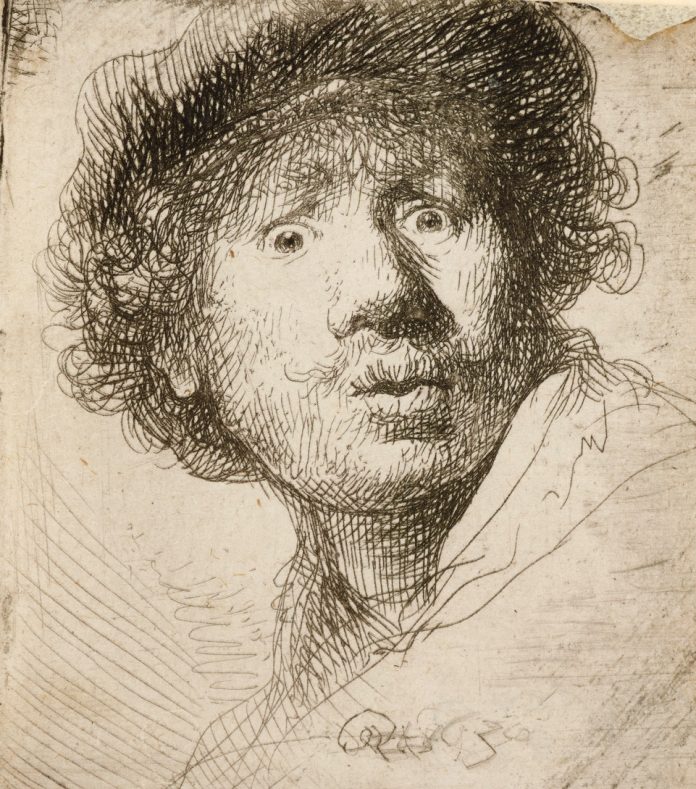To bring one of the most famous Dutch Masters to Oxford is an enormous feat in itself, but what the Ashmolean has excelled at in their new exhibition Young Rembrandt is looking at how a young dutch boy with aspirations to become a painter turned into one of the most recognisable artists in the world.
“Rembrandt’s progress wasn’t even gradual, it was two steps forward and one step back and his struggle is evident, but this is what makes him such a great artist.”
Neither does The Ashmolean shy away from highlighting the struggles, mistakes and often slow progress made in Rembrandt’s case, showcasing his early work often as a example of the trials and tribulations involved in reaching such lofty artistic heights.
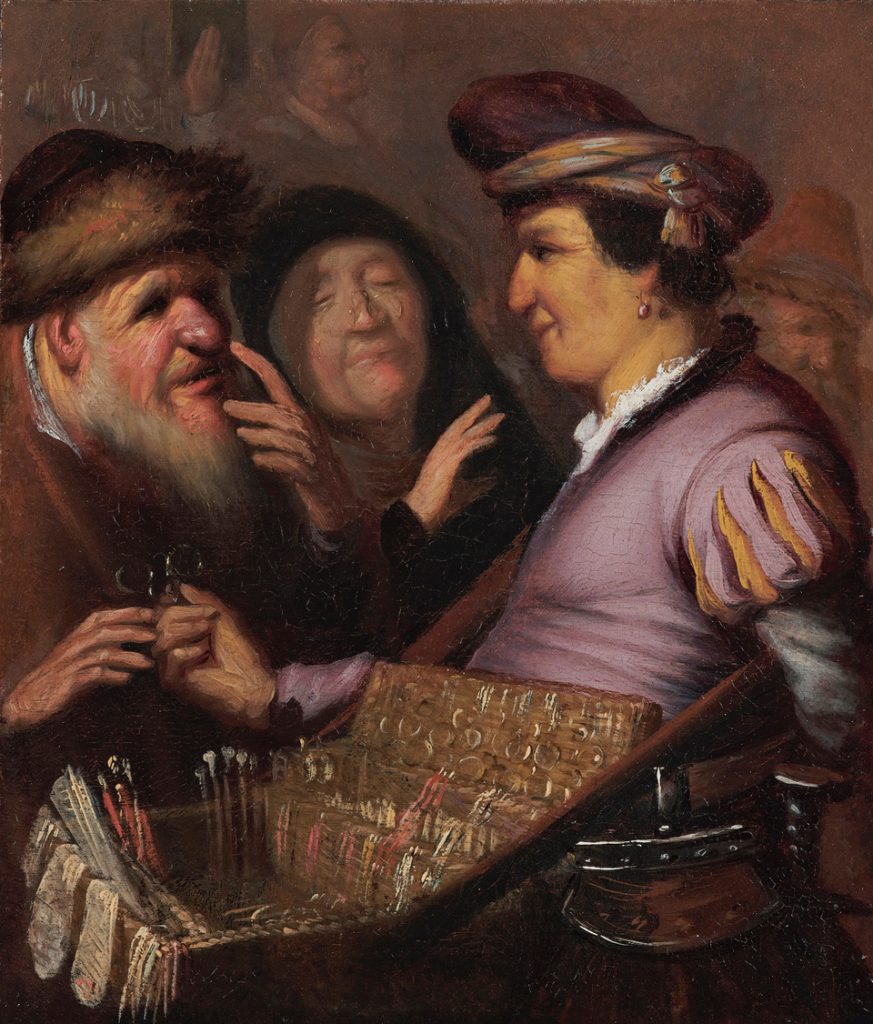
World experts agree that while contemporary artists such as Van Dyck was a child prodigy, things didn’t come as easily to Rembrandt himself. He had to work at it, make mistakes, experiment, and fine tune his skills until he became collectable and revered by every court in Europe.
His trajectory is therefore a marvel to behold, because while the exhibition, which opens on Thursday, hones in on the years 1624-1634, within that period enormous progress is made. This is evidenced in the last paintings in the exhibitions; commissioned by the Prince of Orange and Charles I respectively. In short, by 1634 Rembrandt had made it, and his later works adorn museums and galleries all over the world to this day.
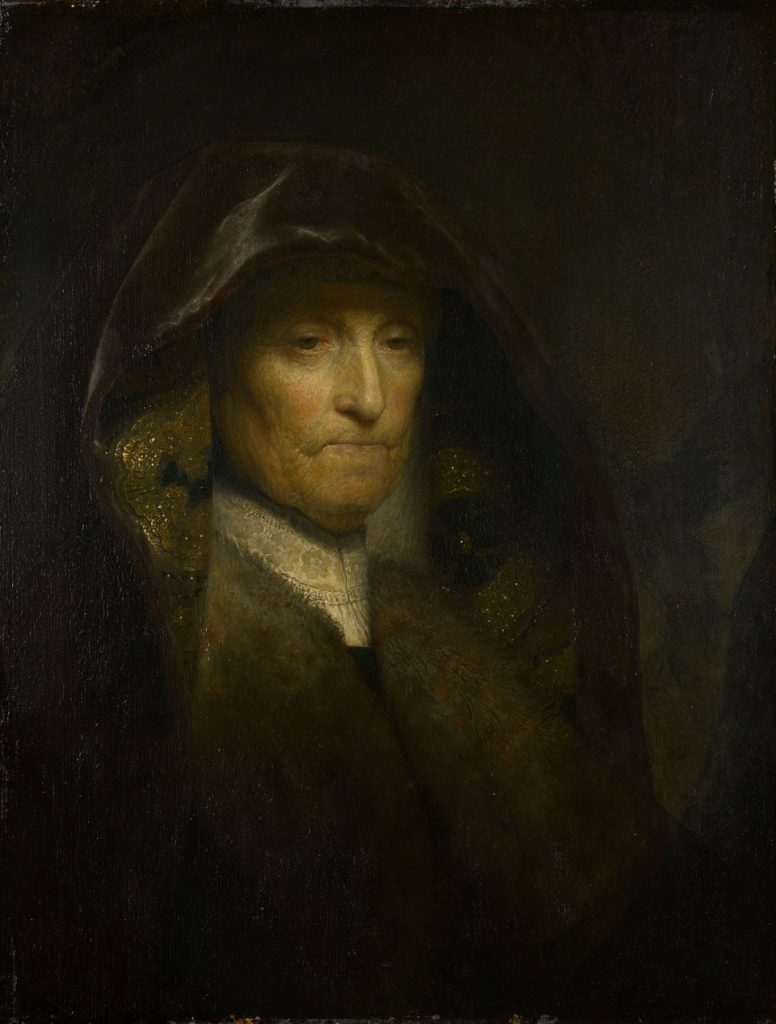
But Rembrandt’s journey is equally as interesting, and makes this famous painter all the more human for it. His wrestles with perspective, detailing, colour and the nuances between light and dark are all evidenced here in the 31 paintings and 90 drawings gathered from all over the world, as well as from the Ashmolean’s own collection.
Scattered throughout are examples of the styles, composition and detailing that would dominate Rembrandt’s work for the rest of his life. His penchant for the lesser known biblical stories, self portraits, dressing up, costumes, international influences, his obsession with old people, peasants and beggers, unsightly nudes, all a result of the methods he fine tuned in this earlier period.

There is a sketch of a leg in red chalk practised over and over again. You can feel the determination and his resolute work ethic. Rembrandt knew he had to practice and his dedication vibrates through the room.
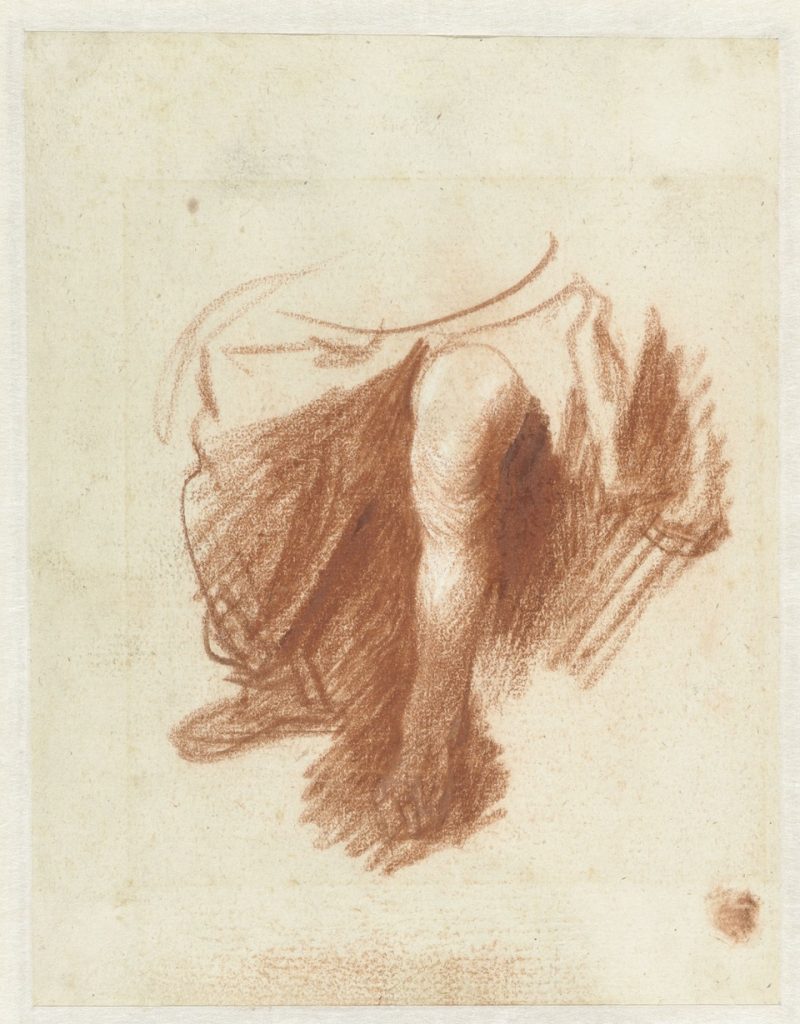
Red chalk on laid paper, 22.6 x 17.7 cm
Rijksmuseum, Amsterdam
So despite his sometimes ill-advised, ill-equipped attempts at print-making, ham fisted figure painting, small eyes, hands like sausages, clumsy brushwork, ill conceived compositions and gaudy colours, his scratchy prints, as pointed out by curator An Van Kemp, that he learned the hard way what worked and what didn’t, played out right before your very eyes.
Or as Professor Christopher Brown, co-curator and Director-Emeritus of the Ashmolean put it: “This astonishing transformation from clumsy boy to astonishing master is evident right here. Rembrandt’s progress wasn’t even gradual, it was two steps forward and one step back and his struggle is evident, but this is what makes him such a great artist.”
An educative, enthralling, insightful, must see exhibition which will change the way you look at Rembrandt’s art for ever
The exhibition Young Rembrandt has been 10 years in the making, ironically as long as the depicted exhibition period itself, and brought to Oxford in partnership with Museum De Lakenhal, Leiden.
What is even more extraordinary are the stories behind the art, often as interesting as the exhibits themselves.
Take the recently discovered Laughing Rembrandt sold at an auction in Cirencester in 2007, having been wrongly identified by the auctioneers. It was originally priced between £1000 and £1500, but two experts followed a hunch and bid up to £2.2 million for it, which was later authenticated, now found in the Getty Museum.
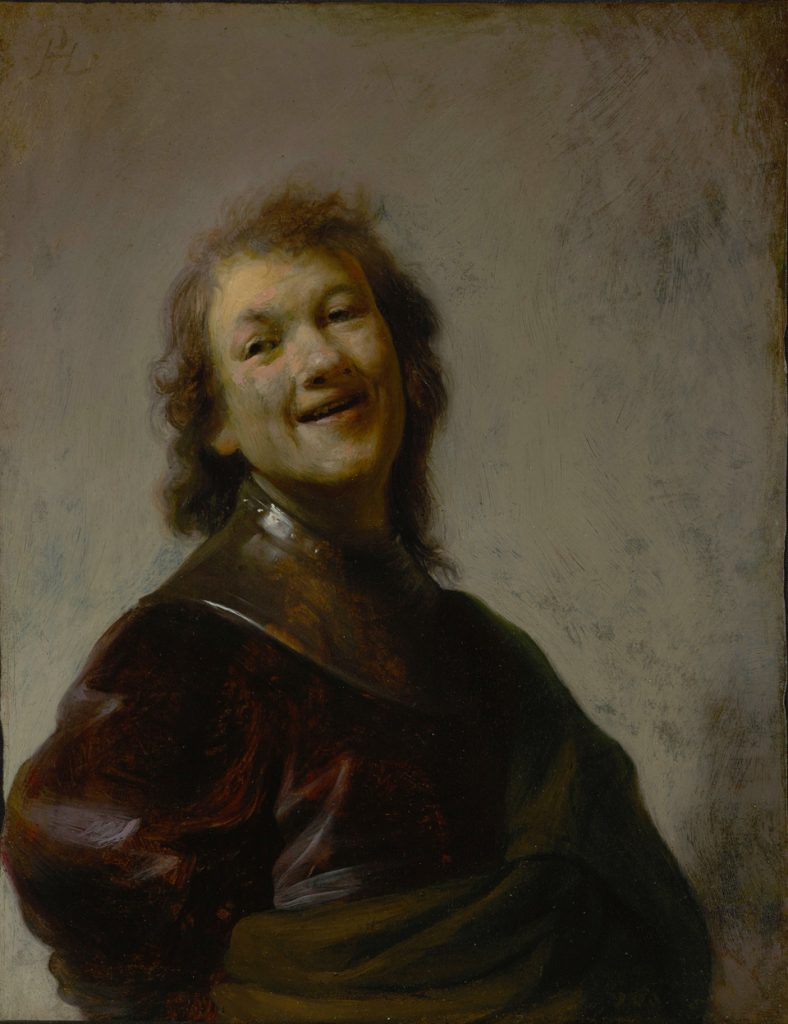
Or the two works never been seen in England before, one from Moscow; Christ Driving The Money Changers from the Temple (1626), the other the Flight Into Egypt leant by Musee des Beaux Arts.
Let the Little Children Come to Me was only found in Cologne in 2014 at an auction and dates from 1627. It is still being restored, much of it painted over in the 17th century, including the nudity of the child, so an ongoing work in progress.

The History Painting from 1626 is still a point of contention, scholars all over the world vying to solve the mystery of what the subject matter actually represents.
Another highlight, at the end of the exhibition are the court portraits of Maurits Huygens and Jacques de Gheyn, commissioned as friendship portraits in 1632, who then took the paintings back to their respective homes, the duo only now reunited after spending centuries apart.
So whilst the exhibition begins when Rembrandt is aged 18 and setting up in his family home in Leiden as an independent artist in 1624, by the end he is a burgher, his self portrait complete with a statement cloak and hat, evidence of his success.
What the Ashmolean therefore encompasses in this fascinating and detailed exhibition is just how far Rembrandt has come within this time period and how hard he worked to get there.
An educative, enthralling, insightful, must see exhibition which will change the way you look at Rembrandt’s art for ever.
Young Rembrandt runs at The Ashmolean from Thursday February 27 – June 7.











